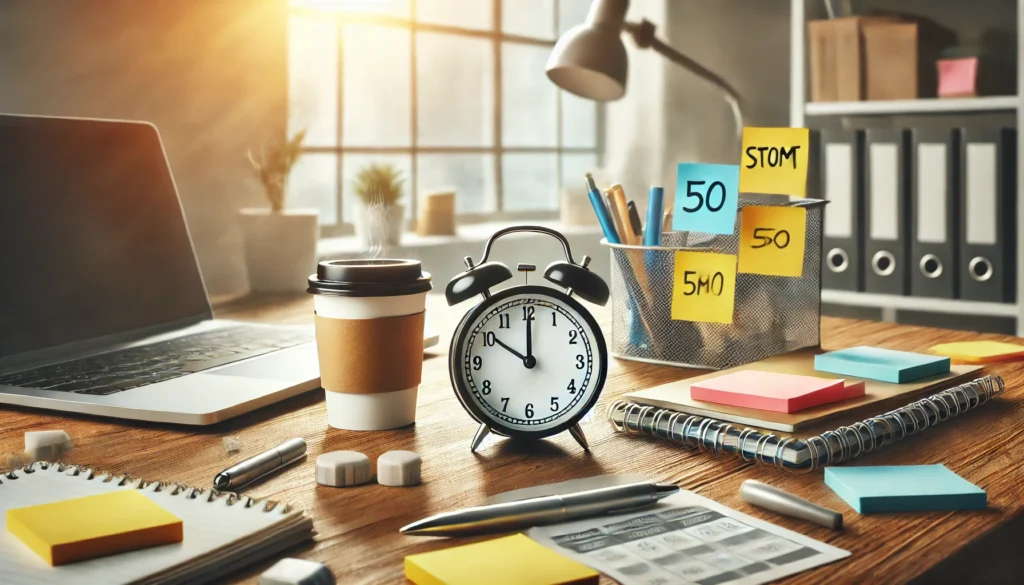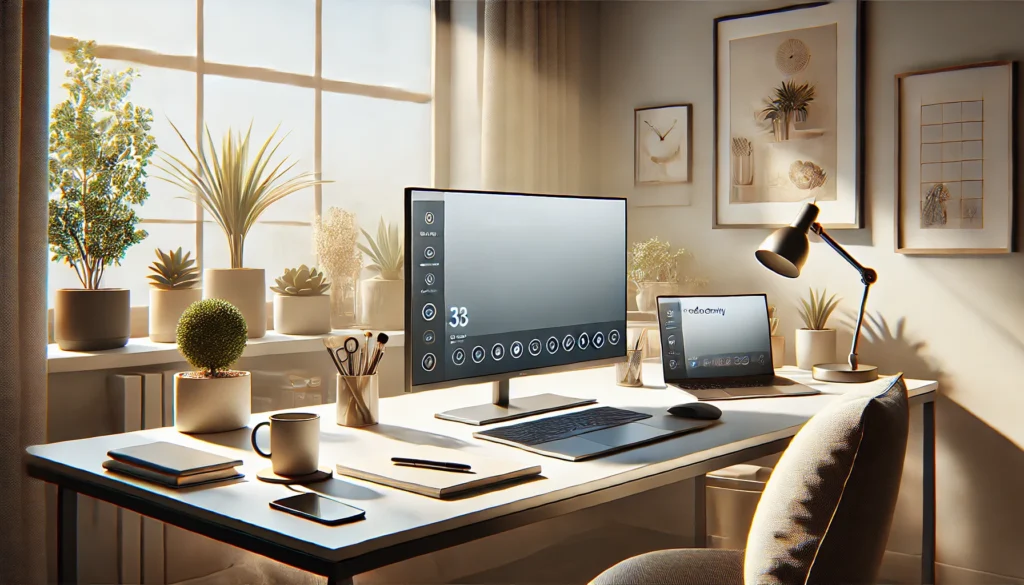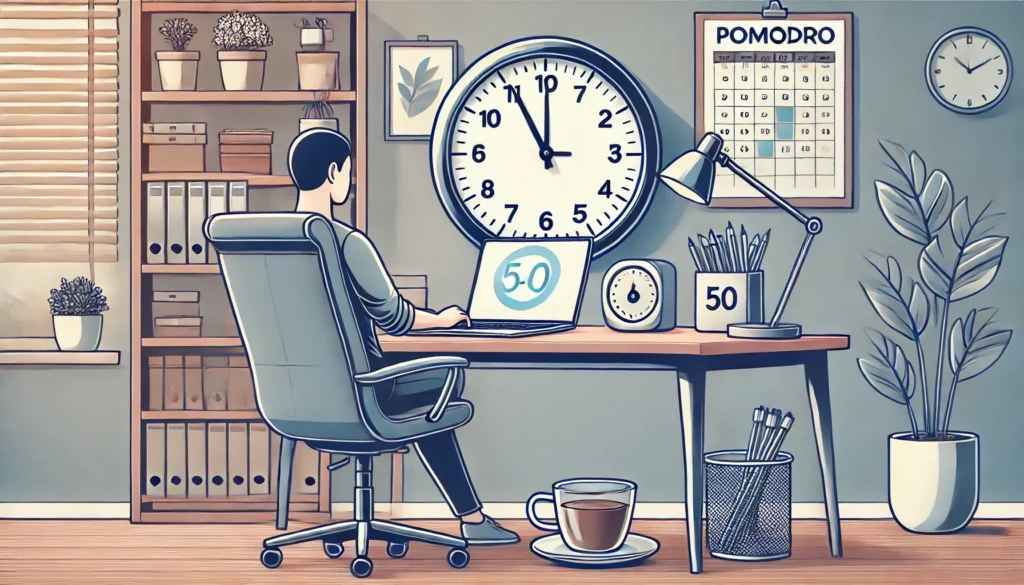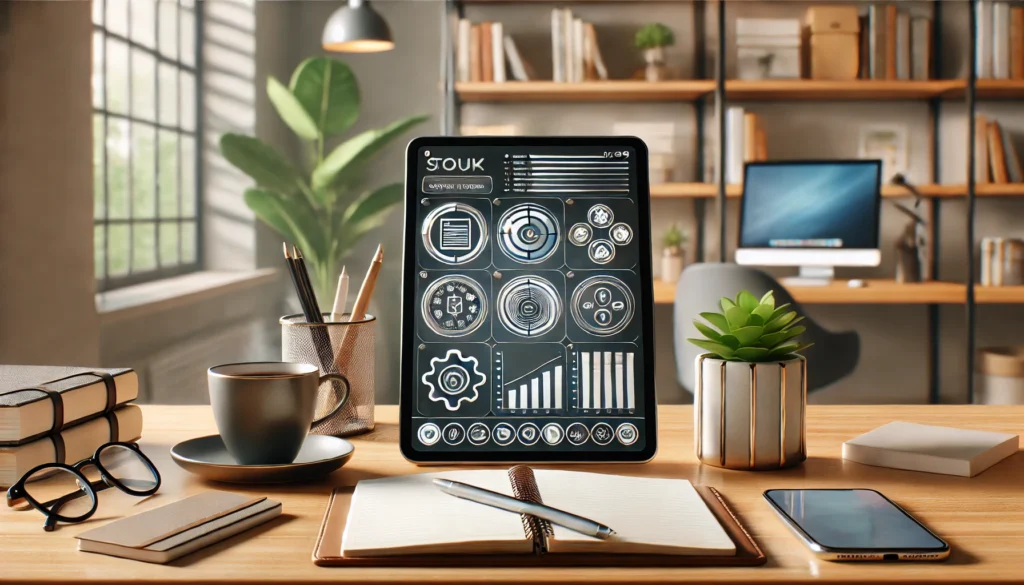The first step in enhancing productivity is understanding what truly needs your attention. Begin by categorizing tasks based on urgency and importance. Utilize the Eisenhower Box, a time management tool that divides tasks into four quadrants: urgent and important, important but not urgent, urgent but not important, and neither urgent nor important. This method helps prioritize tasks, ensuring that you focus on what truly matters.
You may also like: Staying Motivated When Working from Home
a. Categorize with Precision
Start by listing all your tasks and categorizing them meticulously. This involves not only identifying what is urgent and important but also recognizing tasks that could be delegated or postponed. Such categorization provides clarity and helps in directing your energy towards high-impact activities.
b. Review and Adjust Regularly
Prioritization is not a one-time activity. Regularly review your task list and adjust based on changing circumstances and priorities. This flexibility ensures that you are always working on the most pertinent tasks and adapting to new challenges or opportunities.
c. Set Time Limits for Tasks
Assign specific time limits to each task to avoid spending too much time on less critical activities. This not only keeps you on track but also helps in maintaining a balance between different tasks, ensuring that essential duties are not overlooked.
2. Embrace the Pomodoro Technique
The Pomodoro Technique, developed by Francesco Cirillo in the late 1980s, is a time management method that encourages working in short, focused bursts followed by brief breaks. Set a timer for 25 minutes and work on a task without interruptions. Once the timer goes off, take a 5-minute break. Repeat this cycle and take a longer break after completing four sessions. This technique not only enhances focus but also prevents burnout.

a. Customize Your Pomodoro Intervals
While the traditional Pomodoro is set at 25 minutes of work followed by a 5-minute break, feel free to adjust these intervals to better suit your personal working style. Some may find that slightly longer or shorter intervals boost their productivity even more effectively.
b. Use Apps to Track Progress
There are numerous apps specifically designed to support the Pomodoro Technique. These apps can help you keep track of your sessions, breaks, and overall productivity, offering insights into your work habits and areas for improvement.
c. Incorporate Deep Work Sessions
For tasks that require deeper concentration and focus, consider integrating longer ‘deep work’ sessions alongside your Pomodoros. These might last anywhere from 60 to 90 minutes, allowing you to delve into complex projects without disruption.
3. Optimize Your Workspace
A cluttered workspace can lead to a cluttered mind. Organize your desk, remove unnecessary items, and ensure that everything you need is within arm’s reach. Consider ergonomics, too—a comfortable chair, proper lighting, and a desk at the right height can significantly improve your productivity and reduce fatigue.
a. Declutter and Organize
Begin with a thorough declutter of your workspace. Remove items that are not regularly used, and organize your essentials in a way that maximizes efficiency. A clean and orderly environment can greatly enhance your mental clarity and focus.
b. Ergonomics Matter
Invest in ergonomic furniture that supports your health and comfort. This includes an adjustable chair with proper lumbar support, a desk that encourages good posture, and monitor stands that reduce neck strain. Ergonomic equipment reduces physical discomfort, allowing you to work more effectively.

c. Personalize for Inspiration
Add personal touches to your workspace that inspire and motivate you. This could be artwork, motivational quotes, or family photos. These elements can create a positive atmosphere, boosting your mood and productivity.
d. Use Noise-Canceling Headphones
Noise pollution can be a major distraction. Invest in noise-canceling headphones to create a quiet environment conducive to concentration. Listening to calming or instrumental music can also help maintain focus.
e. Incorporate Greenery
Studies have shown that incorporating plants into your workspace can improve air quality and enhance mood and productivity. Consider adding a small plant to your desk to reap these benefits.
4. Leverage Technology Wisely
With the plethora of productivity apps available today, it’s easy to get overwhelmed. Choose tools that align with your workflow and stick to them. Apps like Trello for project management, Evernote for note-taking, and Slack for communication can streamline processes and keep you organized.
a. Choose the Right Tools
Begin by assessing your specific needs and workflows. Choose applications that integrate seamlessly with your work habits and objectives. It’s better to master a few tools than to spread yourself thin across many.

b. Integrate Tools for Synergy
Look for tools that can connect and work together, creating a seamless workflow. For instance, integrating your calendar app with your task manager can help ensure that deadlines and reminders are automatically synced.
c. Stay Updated
Technology evolves rapidly, and staying up-to-date with the latest features or tools can provide a productivity edge. Regularly review your toolset and explore new functionalities that can enhance your workflow efficiency.
d. Limit Notifications
Minimize distractions by managing app notifications. Customize settings to receive alerts only for critical messages or updates, helping you maintain focus on your tasks without constant interruptions.
5. Practice Mindfulness and Meditation
Mindfulness and meditation have been shown to improve focus, reduce stress, and enhance creativity. Dedicate a few minutes each day to practice mindfulness, whether through meditation, deep breathing exercises, or simply taking a moment to pause and reflect.
a. Start with Short Sessions
If you’re new to mindfulness and meditation, start with short, manageable sessions. Even a few minutes a day can make a significant difference. Gradually increase the duration as you become more comfortable with the practice.
b. Use Guided Meditations
Consider using apps or online resources that offer guided meditation sessions. These can provide structure and guidance, making it easier to develop a consistent practice and explore different meditation techniques.
c. Incorporate Breathing Exercises
Breathing exercises are a simple yet powerful way to practice mindfulness. Techniques such as deep breathing or box breathing can calm the mind, reduce stress, and improve concentration.
d. Create a Calm Environment
Designate a quiet space for your mindfulness practice. This could be a corner of your office or a separate room. A calm environment helps you focus inward, enhancing the effectiveness of your practice.
6. Set Clear Goals and Objectives
Having clear, attainable goals can provide direction and motivation. Break down large projects into smaller, manageable tasks with specific deadlines. This not only makes tasks less daunting but also provides a sense of accomplishment as you complete each step.

a. Define SMART Goals
Ensure your goals are Specific, Measurable, Achievable, Relevant, and Time-bound (SMART). This framework helps in creating clear and actionable objectives, increasing the likelihood of successful outcomes.
b. Visualize Your Goals
Use visualization techniques to imagine the achievement of your goals. This mental practice can enhance motivation and provide a clearer picture of what success looks like, helping to maintain focus and determination.
c. Review and Reflect
Regularly review your progress towards your goals and reflect on what is working or what needs adjustment. This ongoing evaluation helps in staying aligned with your objectives and making necessary course corrections.
d. Celebrate Milestones
Recognize and celebrate when you reach significant milestones. This not only provides a sense of accomplishment but also boosts morale and motivation to continue working towards your larger goals.
7. Limit Multitasking
Despite the common belief that multitasking increases productivity, research has shown that it can actually reduce efficiency and increase errors. Focus on completing one task at a time before moving on to the next. This approach allows for deeper concentration and higher-quality work.
a. Understand the Cost of Multitasking
Educate yourself about the cognitive costs associated with multitasking. Understanding how it divides attention and reduces efficiency can reinforce the importance of single-tasking for better productivity and performance.
b. Use Task Management Techniques
Implement task management techniques, such as time blocking or batching similar tasks together. These strategies help in organizing your workload and minimizing the temptation to juggle multiple tasks simultaneously.
c. Practice Mindful Single-Tasking
Focus on being present with one task at a time. Mindful single-tasking involves dedicating your full attention and effort to a single activity, enhancing concentration and the quality of your work.
d. Limit Distractions
Create an environment that supports single-tasking by minimizing potential distractions. This could involve turning off notifications, setting specific work hours, or using website blockers to maintain focus on your current task.
8. Take Regular Breaks
Regular breaks are essential for maintaining productivity. Step away from your desk every hour, even if it’s just for a few minutes. Stretch, walk around, or grab a healthy snack. These breaks can rejuvenate your mind and body, leading to increased efficiency when you return to work.
a. Schedule Your Breaks
Plan and schedule regular breaks throughout your workday. Knowing when your next break is due can provide motivation and help structure your work periods, ensuring consistent productivity.
b. Engage in Physical Activity
Use breaks as an opportunity to engage in light physical activity. Stretching, walking, or performing simple exercises can boost circulation, improve mood, and refresh your mind for better focus.
c. Practice Relaxation Techniques
Incorporate relaxation techniques during your breaks. Activities such as deep breathing, listening to calming music, or practicing quick meditations can help reduce stress and recharge your mental energy.
d. Step Outside for Fresh Air
Whenever possible, step outside during your breaks to enjoy some fresh air and natural light. This can invigorate your senses and provide a mental reset, helping you to return to work with renewed energy.
9. Stay Physically Active
Physical activity is not only beneficial for your health but also your productivity. Exercise boosts endorphins, improves mood, and enhances cognitive function. Incorporate physical activity into your daily routine, whether it’s a morning jog, a midday yoga session, or an evening walk.
a. Start with Small, Consistent Efforts
If you’re new to regular exercise, start with small, consistent efforts. Short walks, stretches, or quick workouts can easily be integrated into your daily routine and gradually build your fitness levels.
b. Find an Activity You Enjoy
Choose physical activities that you enjoy and look forward to. Whether it’s dancing, cycling, or swimming, finding joy in exercise makes it easier to maintain a consistent routine and reap its productivity benefits.
c. Schedule Exercise into Your Day
Treat exercise as an essential part of your daily schedule. Set specific times for physical activity, just as you would for work tasks or meetings, ensuring it becomes a non-negotiable part of your routine.
d. Consider Standing Desks
Standing desks offer a way to stay active while working. Alternating between sitting and standing throughout the day can improve posture, increase energy levels, and boost productivity.
e. Join a Fitness Community
Consider joining a fitness community or group to stay motivated and accountable. Engaging with others who share similar fitness goals can provide support, encouragement, and a sense of camaraderie.
10. Get Adequate Sleep
Sleep is crucial for cognitive function and overall productivity. Aim for 7-9 hours of quality sleep each night to ensure that you are well-rested and ready to tackle the day’s tasks. Establish a bedtime routine, limit screen time before bed, and create a sleep-conducive environment to improve sleep quality.
a. Establish a Consistent Sleep Schedule
Set a consistent sleep schedule by going to bed and waking up at the same time each day. This helps regulate your body’s internal clock, promoting better sleep quality and overall health.
b. Create a Relaxing Bedtime Routine
Develop a relaxing bedtime routine to signal to your body that it’s time to wind down. Activities such as reading, taking a warm bath, or practicing relaxation exercises can help prepare your mind for restful sleep.
c. Optimize Your Sleep Environment
Ensure your bedroom is conducive to sleep by controlling factors like noise, light, and temperature. Use blackout curtains, white noise machines, and comfortable bedding to create an optimal sleep environment.
d. Limit Screen Time Before Bed
Reduce screen time at least an hour before bed to minimize exposure to blue light, which can interfere with sleep quality. Instead, opt for activities that promote relaxation and help you unwind.
Incorporating these productivity hacks into your daily routine can lead to significant improvements in efficiency and performance. By prioritizing tasks, optimizing your workspace, leveraging technology, and maintaining a healthy lifestyle, you can unlock your full potential and achieve your goals with greater ease.
Remember, productivity is not about doing more in less time but about making the most of the time you have. So, take these strategies to heart and watch as your productivity soars.
Further Reading:
8 WFH Productivity Hacks That Will Make Sure Work Doesn’t Take Over Your Life
Productivity Hacks: 12 Tips to Get More Done in a Work Day
15 Productivity Hacks for a Successful 2024
Important Note: The information contained in this article is for general informational purposes only, and should not be construed as health or medical advice, nor is it intended to diagnose, prevent, treat, or cure any disease or health condition. Before embarking on any diet, fitness regimen, or program of nutritional supplementation, it is advisable to consult your healthcare professional in order to determine its safety and probable efficacy in terms of your individual state of health.
Regarding Nutritional Supplements Or Other Non-Prescription Health Products: If any nutritional supplements or other non-prescription health products are mentioned in the foregoing article, any claims or statements made about them have not been evaluated by the U.S. Food and Drug Administration, and such nutritional supplements or other health products are not intended to diagnose, treat, cure, or prevent any disease.


